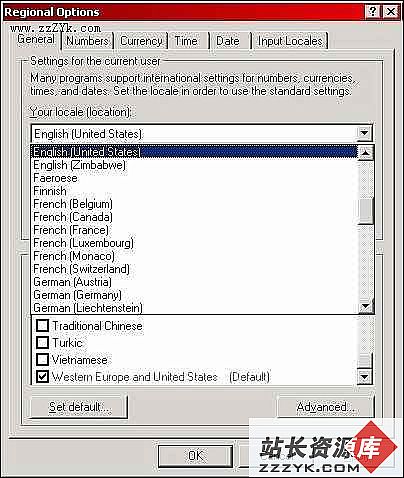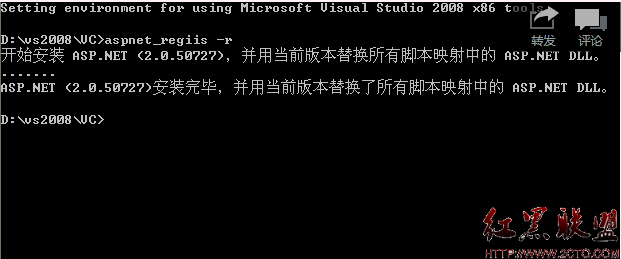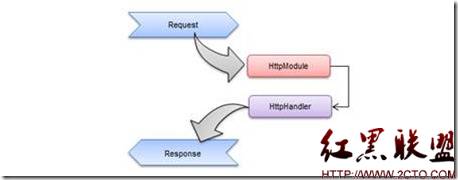Asp.Net底层原理(二、写自己的Asp.Net框架)
写自己的Asp.Net框架,我们不会引用System.Web这个程序集,我们只需要创建要给自己的类库,所以在接下来的程序中,我们所用到的Web组件都是我们自己定义的。首先创建一个程序集名为MyWebApplication,定义了如下一个HttpContext类型,它封装了上下文对象。一、HttpContext定义了三个属性:表示当前服务器请求——HttpRequest服务器响应——HttpResponse一个"工具类"——HttpServerUtilitypublic class HttpContext{public HttpContext(string strRequest);public HttpRequest Request { get; }public HttpResponse Response { get; }public HttpServerUtility Server { get; set; }}与真实的底层有些差别,真实的底层,上下文封装比较繁琐,当然它足够强大。在这里,我们就简单的讲请求报文进行分类,把分类的数据结果交给HttpRequest来保管:HttpRequest的构造函数,接受一个请求报文,对请求报文进行截取分类,我们在这里就只挑拣两个必须的用到的数据url和httpMethod。NameValueCollection是一个字典类型的集合,它对Get请求的数据进行了封装,以供我们可以根据不同的参数获取不同的响应数据 Request.QueryString[]嘛,很熟悉吧。public class HttpRequest{public HttpRequest(string strRequest);public string HttpMethod { get; set; }public NameValueCollection QueryString { get; set; }public string Url { get; set; }}HttpResponse里提供了Write方法,最后输出都要转换为byte字节的,Write(stringresponseStr)的方法是对输出的文本进行累加,输出的时候统一转为了byte字节。 CreateResponseContent这个方法就是在输出的时候对响应报文(ResponseBody和ResponseHead)进行了整合。public class HttpResponse{public HttpResponse(HttpRequest request);public HttpRequest Request { get; set; }public byte[] ResponseBody { get; }public byte[] ResponseHeader { get; set; }public void CreateResponseContent();public void Write(byte[] b);public void Write(string responseStr);}HttpServerUtility就提供了一个方法,为了替换Html模板,对虚拟路径与程序集下的物理路径进行了映射:public class HttpServerUtility : MarshalByRefObject{public HttpServerUtility();public string MapPath(string path);}二、HttpApplication对象这个对象是构成Asp.Net管道的核心对象,实际的HttpApplication是通过反射的方式来创建的,而且此方法要抽象很多,我们在下一篇文章会介绍实际的HttpApplication是怎么回事。我们的HttpApplication里面定义了19个事件,HttpModule就是对这些事件进行注册。InitInternal方法是HttpApplication的初始化方法,它在ProcessRequest方法里会被执行;InitInteranl方法中,调用了一个InitModules方法初始化所有的HttpModele。ProcessRequest方法是绑定并开始执行所有HttpModule里注册的事件,并在第7-8个事件根据请求的url路径,通过反射的方式创建了HttpHandler,在第11-12个时间中执行了HttpHandler的ProcessRequest方法。public class HttpApplication : IHttpHandler{public HttpApplication();public HttpContext Context { get; set; }public event EventHandler AcquireRequestState;public event EventHandler AunthorizeRequest;public event EventHandler AuthenticateRequest;public event EventHandler BeginRequest;public event EventHandler EndRequest;public event EventHandler LogRequest;public event EventHandler PostAcquireRequestState;public event EventHandler PostAuthenticateRequest;public event EventHandler PostAuthorizeRequest;public event EventHandler PostLogRequest;public event EventHandler PostMapRequestHandler;public event EventHandler PostReleaseRequestState;public event EventHandler PostRequestHandlerExecute;public event EventHandler PostResolveRequestCache;public event EventHandler PostUpdateRequestCache;public event EventHandler PreRequestHandlerExecute;public event EventHandler ReleaseRequestState;public event EventHandler ResolveRequestCache;public event EventHandler UpdateRequestCache;private void InitModules();public void InitInternal();public void ProcessRequest(HttpContext context);}HttpModule:HttpApplication里的事件是按顺序执行的,HttpContext就是从HttpApplication的开始 "流" 到结束,这过程中就是这一些列事件来对HttpContext的请求进行处理的,有些事件在到达真正的处理中心(一般处理程序处理)之前就可以执行,或之后执行。比如:AuthenticateRequest是验证请求,用在获取用户信息的时候;PostAcquireRequestState这里以获取到了Session,这这个事件之后才能获取的session。所以我们可以在不同的时间注册不同的事件来更好的扩展HttpApplication的请求处理.在这里没有用配置文件去指定HttpModule,而是指定了一个HttpModules的文件夹,遍历这个文件夹下所有的cs文件,通过反射的方式创建成IHttpModule,执行其Init方法private void InitModules(){HttpModuleCollection moduleCollection = new HttpModuleCollection();if (Directory.Exists("Modules")){string[] modulesPath = Directory.GetFiles("Modules");foreach (string item in modulesPath){if (File.Exists(item))&n补充:Web开发 , ASP.Net ,上一个:2.17 数组循环移位
下一个:asp.net数据四舍五入
- 更多asp疑问解答:
- asp正则过滤重复字符串的代码
- 用asp过滤全部html但保留br类似的符号
- 会asp,但感觉asp要过点,想学php。但我一般做的都是小公司的站,用access数
- PHP的空间可以用ASP的源代码吗?
- 以前做asp程序,现在应该怎样发展?是学.net还是php
- 以前做asp程序,现在应该怎样发展?是学.net还是php
- 想做一个市级的人才网acess,sql数据库,语言asp,jsp,php分别用哪种好
- jsp,asp,php 区别
- 我想找一个有比较多漏洞的网站的源码,比如可以asp,php注入等都可以。供学习研究用。请提供下载地址。。
- 现在候找人做个网站,用ASP,还是PHP语言去做好
- asp,php ,jsp,.net 对于做网站前台的重要吗?
- asp和php的区别是什么?
- 我是新手SEO菜鸟 请问wp dw php asp cms myspl dede 这些软件应该如何区分呀?
- 网页制作相关的三种语言:ASP JSP PHP那个好点,简单点?
- 网页制作相关的三种语言:ASP JSP PHP那个好点,简单点?






